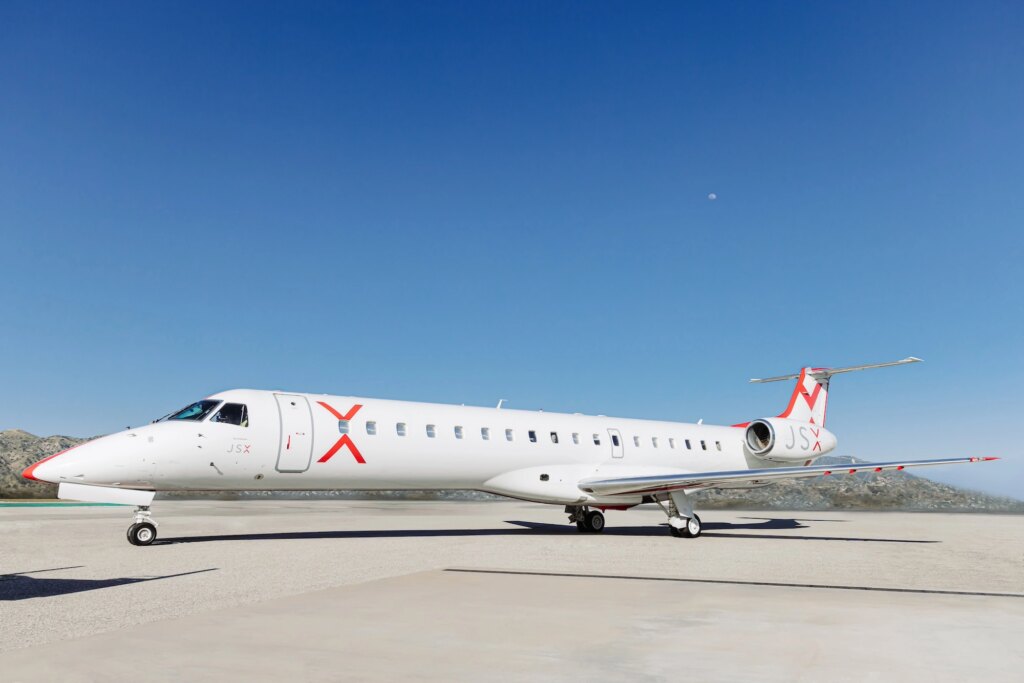On Monday, the Federal Aviation Administration described new rules that would require air carriers like JSX to abide by the same safety parameters as other non-public charter operations, a move that JSX CEO Alex Wilcox heavily criticized last year.
When the proposed rules were first announced in November, Wilcox blamed competitors like American and Southwest Airlines for pushing for the FAA to eliminate one of JSX’s major advantages: driving right up to the plane while avoiding the terminal and normal security screening process. The FAA, which received overwhelming public comment in support of JSX’s business model, thinks JSX should operate like other airlines. “If a company is effectively operating as a scheduled airline, the FAA needs to determine whether those operations should follow the same stringent rules as scheduled airlines,” said FAA Administrator Mike Whitaker.
The FAA’s so-called “public charter loophole” allows operators like JSX, which offers dozens of point-to-point flights around the country, to avoid much of the hassle of modern air travel. Wilcox created two companies to get around the requirement that private charters with lower safety parameters can’t set specific flight times. Customers buy tickets from one company, while a separate entity would fly the planes at set times and dates. Patrons park their car in a different area 20 minutes before the flight, walk up, and board, allowing customers to avoid long TSA and ticketing lines for flights of 30 people or less. Because JSX isn’t an “airline” according to the FAA, JSX pilots don’t have to have as many flying hours or retire at 65.
In November, Wilcox was confident that JSX would prevail against what he called “gangs of bullies” that consisted of big airlines and their pilot unions, who were using questions about safety regulations to eliminate a competitor. JSX notified customers and launched a website defending its record and business model. Competition, not safety, is the real issue here, Wilcox says. “There is no beating around the bush. This is yelling fire in a crowded theater with no fire. There is no data to support the complaint,” Wilcox said.
JSX has been expanding routes and flights since the pandemic devastated air travel. Airline Geeks reported that the company grew its passenger count by 118 percent between 2019 and 2023. 2022 was the company’s busiest year, with 30,000 flights flown, but in November Wilcox said that number is expected to grow by 65 percent and record $500 million in revenue by the end of last year. Wilcox predicted the company would cross $1 billion in the next five years. In less than a decade, the company has gone from operating 641 flights on six routes to nearly 35,000 flights on 48 routes.
Despite the recent success, Wilcox said in November that the new regulations would eliminate JSX’s ability to function and make a profit, meaning the public wouldn’t be able to access the majority of airports in the country where commercial airlines don’t fly. Armed with a lobbyist and financial backers such as JetBlue and United Airlines, the company looks to continue its model.
“More than half of JSX’s public charter markets operate in airports that are not served by large network airlines, yet there are thousands more airports—funded by the American taxpayer—that remain inaccessible to the vast majority of Americans unless they have the means to afford private jets,” JSX said in a statement.
Despite Wilcox saying new FAA regulations would doom the company, JSX is forging ahead. This week, the company announced three future routes to Taos, New Mexico, out of Dallas, Boulder, Colorado, and Las Vegas, Nevada. The company also highlighted its plans to launch a fleet of 332 hybrid-electric airplanes by 2028. The FAA says it will create a working group to assess how operators like JSX can continue to fly under a revised framework, though it is unclear what the framework will be or if it will be viable for JSX. Whitaker added a glimmer of hope. “We want to look at how future innovation might cause us to think differently,” he said. “Safe air travel options should be available to everyone, not limited to only those living near a major airport. We want to put a safety lens over the options of future innovation as we work to further connect small and rural communities to open up more options for everyone at the same high level of safety.”
Despite the setback, JSX remains positive. The new rules haven’t been published, and the comment and implementation period has yet to come. “We eagerly look forward to collaborating with our regulators to cement the importance of public charters and expand access to vital air connectivity in the future,” JSX’s statement read.
Author






